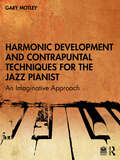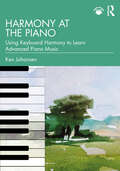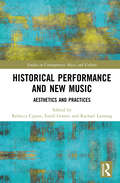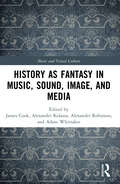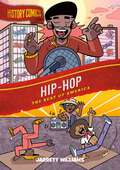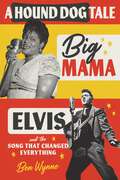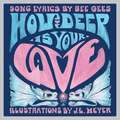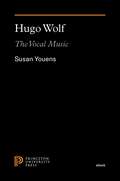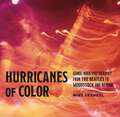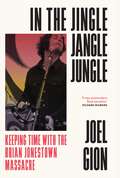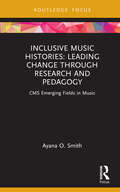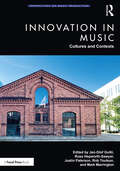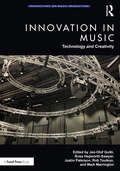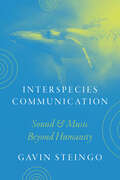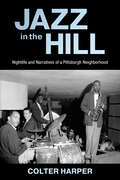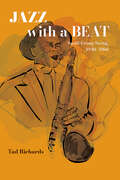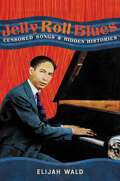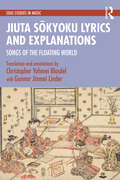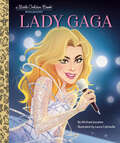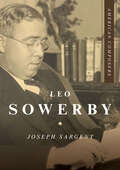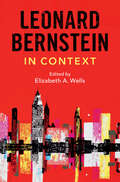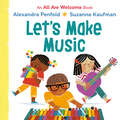- Table View
- List View
Harmonic Development and Contrapuntal Techniques for the Jazz Pianist: An Imaginative Approach
by Gary MotleyHarmonic Development and Contrapuntal Techniques for the Jazz Pianist serves as a guide for harmonic expansion and development for jazz piano, offering pianists both a rationale and methods to improve contrapuntal hand techniques. The text focuses on the relationship between theory and execution and both of those components’ usefulness in creating a jazz sound at the piano. This kinaesthetic method provides the learner with a systematic approach to harmonic movement, revealing options that may not have been otherwise apparent. This method will allow pianists to add depth and dimension to their chord voicings in the same way that vocalists and wind instrumentalists give character and shape to the notes they create. Key features include musical examples ranging from singular chord construction to sophisticated harmonic progressions and song application. Performance exercises are provided throughout the text. Learners and instructors are encouraged to create their own exercises. Related ancillaries at harmoniccounterpoint.com include: Musical examples Audio tracks Performance exercises Written assignments Intended for the learner who is reasonably familiar with essential jazz harmony, this textbook will be both a significant resource for the advanced player and a fundamental component for the learner in a structured academic musical setting.
Harmony at the Piano: Using Keyboard Harmony to Learn Advanced Piano Music
by Ken JohansenHarmony at the Piano adapts the traditional study of keyboard harmony to the practical needs of modern piano students, using innovative exercises to help students practice their repertoire more deliberately, consciously, and creatively. The author introduces the essential elements of harmony through extensive examples from real piano music. Rooted in the understanding that the language of tonal harmony is best assimilated at the keyboard, this textbook: Gives students effective practice methods for learning repertoire, including techniques for memorizing music in a deliberate, analytical way. Connects harmony to musical expression, enabling students to make interpretive decisions based on their understanding of harmony. Contains extensive practice drills in each chapter, including chord progressions, figured bass, melody harmonization, reduction techniques, transposition, repertoire study, and more. Designed to support a full college or conservatory course in keyboard harmony, this book clearly connects the study of harmony to practical musicianship and keyboard skills, providing an essential resource for all instructors and students of advanced piano music. Extensive online resources complement this textbook, including suggested realizations of the figured bass exercises, the original scores of the melody harmonization and fill-in-the-blank exercises, as well as additional exercises and examples.
Historical Performance and New Music: Aesthetics and Practices
by Rebecca Cypess, Estelí Gomez, and Rachael LansangThe worlds of new music and historically informed performance might seem quite distant from one another. Yet, upon closer consideration, clear points of convergence emerge. Not only do many contemporary performers move easily between these two worlds, but they often do so using a shared ethos of flexibility, improvisation, curiosity, and collaboration—collaboration with composers past and present, with other performers, and with audiences. Bringing together expert scholars and performers considering a wide range of issues and case studies, Historical Performance and New Music—the first book of its kind—addresses the synergies in aesthetics and practices in historical performance and new music. The essays treat matters including technologies and media such as laptops, printing presses, and graphic notation; new music written for period instruments from natural horns to the clavichord; personalities such as the pioneering singer Cathy Berberian; the musically “omnivorous” ensembles A Far Cry and Roomful of Teeth; and composers Luciano Berio, David Lang, Molly Herron, Caroline Shaw, and many others. Historical Performance and New Music presents pathbreaking ideas in an accessible style that speaks to performers, composers, scholars, and music lovers alike. Richly documented and diverse in its methods and subject matter, this book will open new conversations about contemporary musical life.
History as Fantasy in Music, Sound, Image, and Media (Music and Visual Culture)
by James Cook, Alexander Kolassa, Alexander Robinson, and Adam WhittakerExploring how music is used to portray the past in a variety of media, this book probes the relationship between history and fantasy in the imagination of the musical past. The volume brings together essays from multidisciplinary perspectives, addressing the use of music to convey a sense of the past in a wide range of multimedia contexts, including television, documentaries, opera, musical theatre, contemporary and historical film, videogames, and virtual reality. With a focus on early music and medievalism, the contributors theorise the role of music and sound in constructing ideas of the past. In three interrelated sections, the chapters problematise notions of historical authenticity on the stage and screen; theorise the future of musical histories in immersive and virtual media; and explore sound’s role in more fantastical appropriations of history in television and videogames. Together, they poseprovocative questions regarding our perceptions of ‘early’ music and the sensory experience of distant history. Offering new ways to understand the past at the crossroads of musical and visual culture, this collection is relevant to researchers across music, media, and historical and cultural studies.
History Comics: The Beat of America (History Comics)
by Jarrett WilliamsMUSICAL REVOLUTION SWEEPS NATION AND BEYONDHow did a bunch of young people from the inner city create a genre of music that became a global phenomenon? From its humble origins at house parties in the Bronx, where DJs mixed old records to create new sounds, charismatic MCs let their clever lyrics flow, and B-boys and B-girls pioneered inventive dance moves, hip-hop quickly became a musical and cultural revolution. Hip-Hop: The Beat of AmericaMeet Aaliyah, a hip-hop superfan who is about to get a lesson in all things “old school” courtesy of her dad, who grew up in the 1970s when rap music first hit the scene. The pair take a day trip to the Bronx where Aaliyah discovers the many unsung heroes who helped create the foundations of the hip-hop we all enjoy today. So get ready to drop the beat, bust a move, and get down with some fresh rap knowledge!Perfect for readers of Can't Stop, Won't Stop and Nathan Hale's Hazardous tales.
A Hound Dog Tale: Big Mama, Elvis, and the Song That Changed Everything
by Ben WynneThe release of the song “Hound Dog” in 1953 marked a turning point in American popular culture, and throughout its history, the hit ballad bridged divides of race, gender, and generational conflict. Ben Wynne’s A Hound Dog Tale discusses the stars who made this rock ’n’ roll standard famous, from Willie Mae “Big Mama” Thornton to Elvis Presley, along with an eclectic cast of characters, including singers, songwriters, musicians, record producers and managers, famous television hosts, several lawyers, and even a gangster or two.Wynne’s examination of this American classic reveals how “Hound Dog” reflected the values and issues of 1950s American society, and sheds light on the lesser-known elements of the song’s creation and legacy. A Hound Dog Tale will capture the imagination of anyone who has ever tapped a foot to the growl of a blues riff or the bark of a rock ’n’ roll guitar.
How Deep Is Your Love: A Children's Picture Book
by Bee GeesA majestic picture book based on the Bee Gees's classic love song "How deep is your love? I really mean to learn 'Cause we're living in a world of fools Breaking us down When they all should let us be We belong to you and me . . ." How Deep Is Your Love is a fantastical picture book based on one of the Bee Gees's biggest hits. The song topped the Billboard Hot 100 chart, remaining in the top ten for seventeen weeks, and won the band's first of eight GRAMMY awards. With lyrics by the Bee Gees and illustrations by J.L. Meyer, the picture book tells the tale of two bunny mermaids who meet on a rock and descend into the water together. As the bunnies escape traps, skirt around nets and hooks, and protect each other in this thrilling adventure, they realize how deep their love is. Meyer's imaginative story compliments the hit song perfectly and will delight children and adults alike.
Hugo Wolf: The Vocal Music
by Susan YouensA groundbreaking look at one of the great song composers of the late Romantic periodIn the virtual cottage industry of works on fin de siècle Vienna, Hugo Wolf (1860–1903) has been somewhat neglected, perhaps because he was the master of a small genre—the late Romantic lied—and never truly made his mark in the larger forms that command greater public attention. But in the realm of song, he is among the greatest inheritors of Schubert and Schumann, one who was both a traditionalist and a modernist. When the Viennese critic Eduard Hanslick disapprovingly dubbed Wolf &“the Richard Wagner of the lied,&” he was paying oblique homage to Wolf&’s genius as a song composer in the most modern manner.In this book, Susan Youens examines five aspects of Wolf&’s compositional art, each exemplifying a different synthesis of traditionalism and modernity and spanning his entire, tragically brief creative life, from his first efforts to his lapse into insanity in 1897. She discusses Wolf&’s youthful imitations of Schumann, his genius for comic songs of a kind unlike any of his predecessors, his part in the ballad revival of the late nineteenth century, Wolf in relation to his contemporaries, and his pursuit of operatic fame. Youens looks as closely at the poetic texts as she does the music and includes numerous previously unpublished sketches and fragments, examples from songs now long out of print and difficult to obtain, and citations from Wolf&’s vivid letters and other sources of the period.
Hurricanes of Color: Iconic Rock Photography from the Beatles to Woodstock and Beyond (American Music History)
by Mike FrankelIn 1964, fifteen-year-old Mike Frankel found himself among professional photojournalists covering a Beatles concert during the band’s first tour in the United States. A few years later, he was a regular photographer at the Fillmore East, a storied venue in classic rock. And in 1969, he was onstage at Woodstock, documenting one of the most important events in American music history.Featuring Frankel’s stunning photographs of nearly every major rock figure from the 1960s and ’70s—including Led Zeppelin, Pink Floyd, the Rolling Stones, Janis Joplin, and the Grateful Dead—as well as many unpublished images of the Beatles, Hurricanes of Color chronicles an extraordinary moment. Frankel, who was for a time a personal photographer for Jefferson Airplane and Hot Tuna, developed an innovative style—one that layered images with multiple exposures to capture the spirit of the music of the era and the experience of listening to the bands live.A must-have for fans of classic rock, this is a spectacular and profound collection of photography that complements the music of the world’s biggest performers.
In the Jingle Jangle Jungle: Keeping Time with the Brian Jonestown Massacre
by Joel GionThe Brian Jonestown Massacre are one of the great contemporary cult American rock and roll bands. At the peak of their anarchic reign in the San Francisco underground of the mid '90s their psychedelic output was almost as prodigious and impressive as their narcotic intake. Immortalised in one of the most unforgettable rock and roll documentaries of all time, DIG! alongside their friends/rivals/nemeses, The Dandy Warhol's, in their early years when the US were obsessed with grunge, the BJM felt like a '60s anachronism. But with albums like Their Satanic Majesties Second Request and Thank God for Mental Illness, and incendiary, often chaotic, live shows, they burnished their legend as true believers and custodians of the original west coast flame; a privilege and responsibility which continues to this day when the band have a bigger and more dedicated audience than ever.Joel Gion's memoir tells the story of the first ten years of the band from the Duke Seat. A righteous account of the hazards and pleasures of life on and off the road, In the Jingle Jangle Jungle takes use behind the scenes of the supposed behind the scenes film that cemented the band's legend. Funny as hell, shot through with the innocence and wonder of a 'percussionist' whose true role is that of the band's 'spirit animal', In the Jingle Jangle Jungle is destined to take its place alongside cult classics in the pantheon of rock and roll literature like Playing the Bass with Three Left Hands, Head On, and 45 by Bill Drummond. It will also feature a foreword by Anton Newcombe, fellow member and founder of The Brian Jonestown Massacre.
Inclusive Music Histories: CMS Emerging Fields in Music (CMS Emerging Fields in Music)
by Ayana O. SmithInclusive Music Histories: Leading Change through Research and Pedagogy models effective practices for researchers and instructors striving either to reform music history curricula at large or update individual topics within their classes to be more inclusive. Confronting racial and other imbalances of Western music history, the author develops four core principles that enable a shift in thinking to create a truly intersectional music history narrative and provides case studies that can be directly applied in the classroom. The book addresses inclusivity issues in the discipline of musicology by outlining imbalances encoded into the canonic repertory, pedagogy, and historiography of the field. This book offers comprehensive teaching tools that instructors can use at all stages of course design, from syllabus writing and lecture planning to discussion techniques, with assignments for each of the subject matter case studies. Inclusive Music Histories enables instructors to go beyond token representation to a more nuanced music history pedagogy.
Inclusive Music Histories: CMS Emerging Fields in Music (CMS Emerging Fields in Music)
by Ayana O. SmithInclusive Music Histories: Leading Change through Research and Pedagogy models effective practices for researchers and instructors striving either to reform music history curricula at large or update individual topics within their classes to be more inclusive. Confronting racial and other imbalances of Western music history, the author develops four core principles that enable a shift in thinking to create a truly intersectional music history narrative and provides case studies that can be directly applied in the classroom. The book addresses inclusivity issues in the discipline of musicology by outlining imbalances encoded into the canonic repertory, pedagogy, and historiography of the field. This book offers comprehensive teaching tools that instructors can use at all stages of course design, from syllabus writing and lecture planning to discussion techniques, with assignments for each of the subject matter case studies. Inclusive Music Histories enables instructors to go beyond token representation to a more nuanced music history pedagogy.
Innovation in Music: Cultures and Contexts (ISSN)
by Jan-Olof Gullö Russ Hepworth-Sawyer Justin Paterson Rob Toulson Mark MarringtonInnovation in Music: Cultures and Contexts is a groundbreaking collection bringing together contributions from instructors, researchers, and professionals. Split into two sections, covering creative production practices and national/international perspectives, this volume offers truly global outlooks on ever-evolving practices.Including chapters on Dolby Atmos, the history of distortion, creativity in the pandemic, and remote music collaboration, this is recommended reading for professionals, students, and researchers looking for global insights into the fields of music production, music business, and music technology.
Innovation in Music: Technology and Creativity (ISSN)
by Jan-Olof Gullö Russ Hepworth-Sawyer Justin Paterson Rob Toulson Mark MarringtonInnovation in Music: Technology and Creativity is a groundbreaking collection bringing together contributions from instructors, researchers, and professionals. Split into two sections, covering composition and performance, and technology and innovation, this volume offers truly international perspectives on ever-evolving practices.Including chapters on audience interaction, dynamic music methods, AI, and live electronic performances, this is recommended reading for professionals, students, and researchers looking for global insights into the fields of music production, music business, and music technology.
Interspecies Communication: Sound and Music beyond Humanity
by Gavin SteingoA surprising study reveals a plethora of attempts to communicate with non-humans in the modern era. In Interspecies Communication, music scholar Gavin Steingo examines significant cases of attempted communication beyond the human—cases in which the dualistic relationship of human to non-human is dramatically challenged. From singing whales to Sun Ra to searching for alien life, Steingo charts the many ways we have attempted to think about, and indeed to reach, beings that are very unlike ourselves. Steingo focuses on the second half of the twentieth century, when scientists developed new ways of listening to oceans and cosmic space—two realms previously inaccessible to the senses and to empirical investigation. As quintessential frontiers of the postwar period, the outer space of the cosmos and the inner space of oceans were conceptualized as parallel realities, laid bare by newly technologized “ears.” Deeply engaging, Interspecies Communication explores our attempts to cross the border between the human and non-human, to connect with non-humans in the depths of the oceans, the far reaches of the universe, or right under our own noses.
Jazz in the Hill: Nightlife and Narratives of a Pittsburgh Neighborhood (American Made Music Series)
by Colter HarperFrom the 1920s through the 1960s, Pittsburgh’s Hill District was the heart of the city’s Black cultural life and home to a vibrant jazz scene. In Jazz in the Hill: Nightlife and Narratives of a Pittsburgh Neighborhood, Colter Harper looks at how jazz shaped the neighborhood and created a way of life. Beyond backdrops for remarkable careers, jazz clubs sparked the development of a self-determined African American community. In delving into the history of entrepreneurialism, placemaking, labor organizing, and critical listening in the Hill District, Harper forges connections to larger political contexts, processes of urban development, and civil rights struggles.Harper adopts a broad approach in thinking about jazz clubs, foregrounding the network of patrons, business owners, and musicians who were actively invested in community building. Jazz in the Hill provides a valuable case study detailing the intersections of music, political and cultural history, public policy, labor, and law. The book addresses distinctive eras and issues of twentieth century American urban history, including notions of “vice” during the Prohibition Era (1920–1934); “blight” during the mid-twentieth century boom in urban redevelopment (1946–1973); and workplace integration during the civil rights era (1954–1968). Throughout, Harper demonstrates how the clubs, as a nexus of music, politics, economy, labor, and social relations, supported the livelihood of residents and artists while developing cultures of listening and learning. Though the neighborhood has undergone an extensive socioeconomic transformation that has muted its nightlife, this musical legacy continues to guide current development visions for the Hill on the cusp of its remaking.
Jazz with a Beat: Small Group Swing, 1940–1960 (Excelsior Editions)
by Tad RichardsJazz with a Beat is the first book on the often overlooked but vitally important genre of small group swing jazz. Coming into being in the early 1940s, small group swing answered the need in the Black community for a form of jazz that was more accessible (and more danceable) than the new bebop. An adaptation of the big band Black swing (Erskine Hawkins, Jimmie Lunceford, Chick Webb) of the 1930s to small combos, and with a more vigorous beat for the new generation, this music developed and was beloved through the 1940s, continued to be enjoyed through the rock and roll years of the 1950s, and was a major influence on the soul jazz of the 1960s. Among the many hit artists portrayed in these pages are Illinois Jacquet, Louis Jordan, Big Jay McNeely, Joe Liggins, Nat "King" Cole, Red Prysock, Ruth Brown, Nellie Lutcher, Camille Howard, T-Bone Walker, and Ray Charles. Dismissed as "rhythm and blues," this music has been ignored by jazz historians. Jazz with a Beat honors this music as a legitimate genre of jazz and is a stirring evocation of an era. It should be of interest to lovers of jazz and Americana.
Jelly Roll Blues: Censored Songs and Hidden Histories
by Elijah WaldA bestselling music historian follows Jelly Roll Morton on a journey through the hidden worlds and forbidden songs of early blues and jazz. In Jelly Roll Blues: Censored Songs and Hidden Histories, Elijah Wald takes readers on a journey into the hidden and censored world of early blues and jazz, guided by the legendary New Orleans pianist Jelly Roll Morton. Morton became nationally famous as a composer and bandleader in the 1920s, but got his start twenty years earlier, entertaining customers in the city&’s famous bordellos and singing rough blues in Gulf Coast honky-tonks. He recorded an oral history of that time in 1938, but the most distinctive songs were hidden away for over fifty years, because the language and themes were as wild and raunchy as anything in gangsta rap. Those songs inspired Wald to explore how much other history had been locked away and censored, and this book is the result of that quest. Full of previously unpublished lyrics and stories, it paints a new and surprising picture of the dawn of American popular music, when jazz and blues were still the private, after-hours music of the Black "sporting world." It gives new insight into familiar figures like Buddy Bolden and Louis Armstrong, and introduces forgotten characters like Ready Money, the New Orleans sex worker and pickpocket who ended up owning one of the largest Black hotels on the West Coast. Revelatory and fascinating, these songs and stories provide an alternate view of Black culture at the turn of the twentieth century, when a new generation was shaping lives their parents could not have imagined and art that transformed popular culture around the world—the birth of a joyous, angry, desperate, loving, and ferociously funny tradition that resurfaced in hip-hop and continues to inspire young artists in a new millennium.
Jiuta Sōkyoku Lyrics and Explanations: Songs of the Floating World (ISSN)
by Christopher Yohmei Blasdel Gunnar Jinmei LinderJiuta Sōkyoku Lyrics and Explanations is a compendium of seventy-three representative songs from the well-known genre of traditional Japanese Edo-period sankyoku ensemble music.Including extensive annotations along with commentaries and notes on their musical and performative aspects, the collection begins with an overview which traces the history of the jiuta sōkyoku genre and the various socio-political influences at work in its formation. The translations and analyses are followed by a substantive glossary and bibliography, allowing for a deeper understanding of both the literary and musical aspects of jiuta sōkyoku compositions.Jiuta Sōkyoku Lyrics and Explanations is a comprehensive anthology that will be of great interest to researchers, including ethnomusicologists, Japanese studies scholars and poetry lovers who are fascinated with the literary and musical impact of the Edo period.
John Zorn’s File Card Works: Hypertextual Intermediality in Composition and Analysis (ISSN)
by Maurice WindleburnThis book is the first study of John Zorn’s ‘file card’ works, with special focus made on the pieces Godard (1985), Spillane (1986), Interzone (2010), and Liber Novus (2010). It explains the unique creative process behind these compositions, contextualizing them in relation to the history of file cards, the ‘open work’ concept, cinematic listening, and uncreative aesthetics. Semiotic, hermeneutic, and ekphrastic analyses draw hypertextual links between the four file card compositions and the worlds of their respective dedicatees: author Mickey Spillane, filmmaker Jean-Luc Godard, novelist William S. Burroughs and painter Brion Gysin, and psychiatrist C. G. Jung.This book will appeal not only to those interested in Zorn’s music, but also to scholars of music semiotics and hermeneutics, intermedia studies, and avant-garde music.
Lady Gaga: A Little Golden Book Biography (Little Golden Book)
by Michael JoostenHelp your little one dream big with a Little Golden Book biography about pop music icon, actress, and philanthropist Lady Gaga. Little Golden Book biographies are the perfect introduction to nonfiction for young readers—as well as fans of all ages!This Little Golden Book about Lady Gaga--the genre-straddling singer of hits including "Born This Way" and "Shallow" and star of House of Gucci and A Star is Born--is an inspiring read-aloud for young children and their parents who are fans. Look for more Little Golden Book biographies: • Willie Nelson • Beyoncé • Dolly Parton • Taylor Swift • Tony Bennett
Leo Sowerby (American Composers)
by Joseph SargentFrom the 1920s to the 1940s, Leo Sowerby created popular secular works while his sacred compositions led admirers to call him the “dean of American church musicians.” Yet in time, Sowerby’s Pulitzer Prize-winning The Canticle of the Sun and the rest of his corpus lost favor with the A-list symphonies and prominent musicians who had once made him a fixture in their repertoires. Joseph Sargent’s biography offers the first focused study of Sowerby’s life and work against the backdrop of the composer’s place in American music. As Sargent shows, Sowerby’s present-day marginalization as a composer relates less to the quality of his work than the fact that today’s historiographical practices and canon-building activities minimize modern church music. Sargent’s re-evaluation draws on a wide range of perspectives and composer’s music and writings to enrich detailed analyses of musical works and a career-spanning consideration of Sowerby’s musical language and aesthetic priorities.
Leonard Bernstein in Context (Composers in Context)
by Elizabeth WellsDesigned for students, aficionados of classical music, and historians, this volume offers a wide-ranging, multi-disciplinary and comprehensive view of one of the most important musicians of the twentieth century at his 100th anniversary. Scholars from diverse backgrounds and fields have contributed rich insights into Bernstein's life and work in an approachable style, shedding light on Bernstein's social, professional and ideological contexts including his contemporaries and rivals on Broadway, his artistic collaborations, his celebrity status as a conductor on the international concert circuit, and his involvement in music education via broadcasting. From his early education, through his conducting and composing careers, to his fame as musical and cultural ambassador to the world, this book views Bernstein the man and the artist and provides a fascinating overview of American classical music culture during Bernstein's long career in the public spotlight.
Let Me Take You Down: Penny Lane and Strawberry Fields Forever
by Jonathan CottThe conception, creation, recording, and significance of the Beatles&’ &“Penny Lane&” and &“Strawberry Fields Forever&” John Lennon wrote &“Strawberry Fields Forever&” in Almería, Spain, in fall 1966, and in November, in response to that song, Paul McCartney wrote &“Penny Lane&” at his home in London. A culmination of what was one of the most life-altering and chaotic years in the Beatles&’ career, these two songs composed the 1967 double A-side 45 rpm record that has often been called the greatest single in the history of popular music and was, according to Beatles producer George Martin, &“the best record we ever made.&” In Let Me Take You Down: Penny Lane and Strawberry Fields Forever, Jonathan Cott recounts the conception and creation of these songs; describes the tumultuous events and experiences that led the Beatles to call it quits as a touring band and redefine themselves solely as recording artists; and details the complex, seventy-hour recording process that produced seven minutes of indelible music. In writing about these songs, he also focuses on them as inspired artistic expressions of two unique ways of experiencing and being in the world, as Lennon takes us down to Strawberry Fields and McCartney takes us back to Penny Lane. In order to gain new vistas and multiple perspectives on these multifaceted songs, Cott also engages in conversation with five remarkable people: media artist Laurie Anderson; guitarist Bill Frisell; actor Richard Gere; Jungian analyst Margaret Klenck; and urban planner, writer, and musician Jonathan F. P. Rose. The result is a wide-ranging, illuminating exploration of the musical, literary, psychological, cultural, and spiritual aspects of two of the most acclaimed songs in rock and roll history.
Let's Make Music (All Are Welcome)
by Alexandra PenfoldDance to the rhythm of music with the beloved characters from the New York Times bestseller All Are Welcome! A joyous exploration of musical instruments and sounds, perfect for toddlers.Clap your hands. Tap your feet. It&’s time to make some music! Strum the guitar, shake the maracas, and dance to the beat of the drums with the kids from All Are Welcome! A read-out-loud celebration of music and sounds that will have the littlest of readers tapping their feet.
